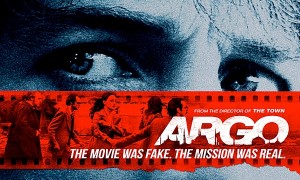The Real Story: “Zero Dark Thirty” and the Hunt for Bin Laden
Posted on January 8, 2013 at 8:00 am
Letter from Senators Feinstein, Levin, and McCain“Zero Dark Thirty” is a leading contender for the Best Picture Oscar. Following her Best Picture and Best Director Oscars for “The Hurt Locker,” Kathryn Bigelow began work on what she thought would be a part journalistic, part feature film version of the hunt for Osama Bin Laden. She did not expect that during the course of developing the film with “Hurt Locker” screenwriter Mark Boal Bin Laden would be found and killed, so that the entire direction of the movie would have to be revised.
The CIA was criticized for working with Bigelow and Boal, but insists that they did not provide the filmmakers with any classified information and has published a statement correcting what it says are inaccuracies in the film. Now that the film is out in a few cities and preparing for its wider release on January 11, politicians and commentators on all sides are criticizing its depiction of torture. Senators Dianne Feinstein, John McCain, and Carl Levin have written to the film’s distributor outlining their objections to the portrayal of torture in the movie, calling it “grossly inaccurate” to portray information gathered as a result of torture as essential to determining Bin Laden’s location: “We are fans of many of your movies and we understand the special role that movies play in our lives, but the fundamental problem is that people who see ‘Zero Dark Thirty’ will believe the events it portrays are facts.” Writer Glenn Greenwald was so eager to complain that the movie supports the use of torture that he decided to condemn it before actually seeing it for himself. I will be addressing some of these issues in my review, but for now I will just say that it is hard to imagine that anyone who sees the movie will think it is an endorsement of torture and that while the movie depicts waterboarding and other high-pressure tactics that have been well documented and are — as the movie makes clear — not permitted any longer, and one or more characters may endorse torture, that does not mean that the movie is pro-torture. When Bigelow accepted her New York Film Critics Circle Best Director award, she said, “I thankfully want to say that I’m standing in a room of people who understand that depiction is not endorsement, and if it was, no artist could ever portray inhumane practices. No author could ever write about them, and no filmmaker could ever delve into the knotty subjects of our time.”
I recommend this piece by Paul Miller, describing his reaction to the film as someone who was in the military on Sept 11, 2001 and later served as a CIA analyst, and this piece about a key interview that informed the screenplay.
Watching this movie made me both sad and angry. Not angry at Kathryn Bigelow or Columbia Pictures. I would have been if she had made a cheap and splashy film that exploited 9/11, my friend’s death, and the bin Laden raid as blockbuster fare. This movie, if made by Michael Bay, would have been disgusting.
But Bigelow has made a sensitive and respectful film, one that honors the people who lived its story. I told my wife after seeing Bigelow’s previous, Oscar-winning film,The Hurt Locker (2009), that it was the most faithful depiction of soldiers’ lives in a modern combat zone I’d ever seen. I felt honored that someone took the time to tell our story, the story of a million veterans of Iraq and Afghanistan, and to tell it right.
Similarly, Zero Dark Thirty tells the stories of the countless soldiers, sailors, airmen, Marines, CIA officers, intelligence professionals, and special forces who have spent a decade hunting not just bin Laden, but all of al-Qaida and its murderous allies around the world. It is the most accurate depiction of intelligence work I’ve ever seen in a movie–the painstaking detective work, the frustration, the dead-ends, the bureaucracy, the uncertainty, and the sudden life-or-death stakes. There isn’t the slightest hint of James Bond or Jason Bourne here: even the SEAL Team Six raid is done slowly, methodically, with more professionalism than flare….Bigelow resists the urge to sensationalize, and in so doing she elevates the material and demands that we pay attention to, and think carefully about, what we are watching….The right response to this film is not anger at the filmmakers. It is, first, anger about 9/11, the wars, the death, and, for me, the casual ignorance among the vast majority of the population about the sacrifices borne by a tiny handful of heroes. I was angry most of all at al-Qaida, at Osama bin Laden and his hateful jihad, at Humam Khalil Abu-Mulal al-Balawi for murdering my friend. But the anger is muted by a pervading sadness: Zero Dark Thirty is a profoundly melancholy, grim film.
The CIA is by nature, culture, and function inclined to keep secrets. And any story-telling, even documentaries, selects some details, leaves others out, shifts emphasis, intentionally and unintentionally. At least one commentator says that the real “Maya” is a man. And the publicity from the film and the focus on the character played by Jessica Chastain, known only in the film as “Maya,” has led to some internal conflicts as well. Now that story would make a great movie.



